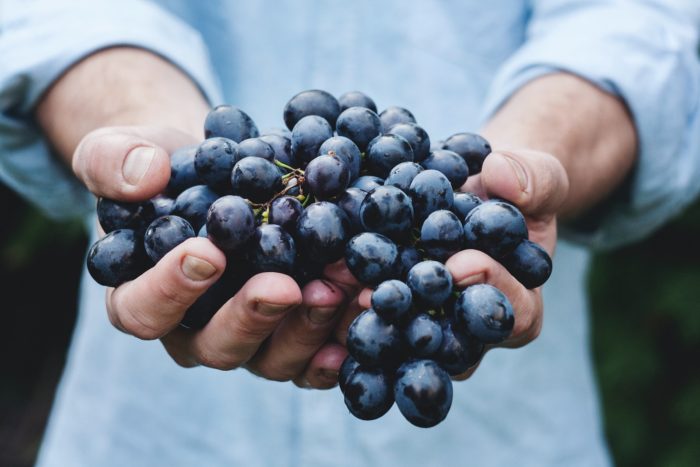Nestled along the stunning Mediterranean coast of north-eastern Spain lies a region of captivating beauty and unparalleled wine heritage: the Costa Brava.
Renowned for its picturesque landscapes, idyllic vineyards, and rich cultural history, the Costa Brava has emerged as a rising star in the world of wine.
Since you’re reading about the Costa Brava’s wines you might be interested in this guided tour of two local wineries with wine tasting included.
Catalan wines, with their unique characteristics and flavours, have been making waves in the global wine industry. From their elegant reds to crisp whites and delightful sparkling cavas, these wines reflect the region’s diverse terroir and the passionate dedication of its winemakers.
The Costa Brava region, in particular, stands out as a fascinating destination for wine enthusiasts seeking an authentic and unforgettable experience.
In this article
- A tale of terroir: understanding the Costa Brava’s wine country
- Unveiling the wine heritage: history and traditions of Catalan winemaking
- A tour through the Costa Brava’s wineries: experiencing the essence of Catalan wines
- Wine tasting and pairing: savouring the flavours of the Costa Brava
- Guided tour of local wineries with tasting
A tale of terroir: understanding the Costa Brava’s wine country
The Costa Brava boasts a picturesque landscape that sets the stage for the creation of exceptional wines. The geographical features of this enchanting region play a vital role in shaping the character and quality of Catalan wines.
At first glance, the Costa Brava captivates with its rugged coastline, dotted with charming fishing villages and secluded coves. However, it is the region’s diverse terroir that truly sets it apart. A combination of factors including climate, soil, and topography, influence the growth and development of grapevines, ultimately imparting distinct characteristics to the resulting wines.
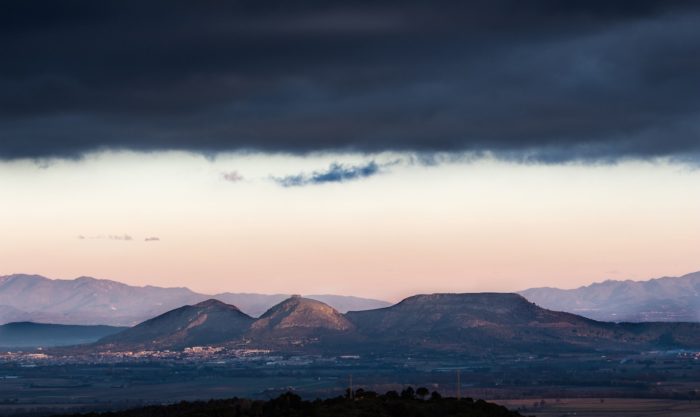
The Costa Brava’s terroir is a tapestry of contrasts. From the coastal plains to the foothills of the mountains, the region experiences a unique medley of microclimates. The proximity to the Mediterranean Sea brings cooling maritime breezes, moderating the heat of the sun and creating a favorable climate for viticulture. This coastal influence not only ensures optimal grape ripening but also imparts a vibrant freshness to the wines.
One of the defining features of the region’s terroir is its diverse range of soil types. The region is a mosaic of geological formations, with soils varying from limestone and clay to schist and slate. Each soil composition contributes specific mineral profiles and drainage characteristics, adding layers of complexity to the wines. The vine’s roots penetrate deeply, absorbing the distinctive flavours and nutrients from the earth, thereby shaping the final expression of the grapes.
The majority of wines produced in the province of Girona produced are protected under the Spanish DOP system (protected designation of origin) as DO Empordà.
To qualify for a DOP designation a wine must not only be produced within an approved area but also with authorised grapes. While the region traditionally produced rosé, reds now account of 60% of DO Empordà wines, 19% are whites and 17% rosé. The remaining 4% are traditional sweet dessert wines. Additionally, while most comes from the area south of Barcelona, a small amount of Cava is also produced in Campmany, Garriguella and Mollet de Peralada.
The region is home to an impressive array of grape varieties, both indigenous and international. Among the red grape varieties, Garnacha thrives, producing wines with bold fruit flavours and supple tannins, while Carignan provides deep colouring and acidity. Tempranillo, known locally as Ull de Llebre (eye of the hare), adds structure and elegance to the red blends. On the white wine front, Garnacha blanc, Macabeo and Xarel·lo are used, while international varieties like Chardonnay and Sauvignon Blanc have found their place, offering a delightful diversity of styles. Macabeo and Xarel·lo and Parellada form the backbone of the cavas produced in the region.
Unveiling the wine heritage: History and Traditions of Catalan Winemaking
Wine has been intertwined with the cultural fabric of Catalonia for centuries, with a rich history that weaves together ancient civilizations, conquerors, and a deep-rooted appreciation for the art of winemaking. Exploring the history and traditions of Catalan winemaking provides us with a profound understanding of the region’s wine heritage.
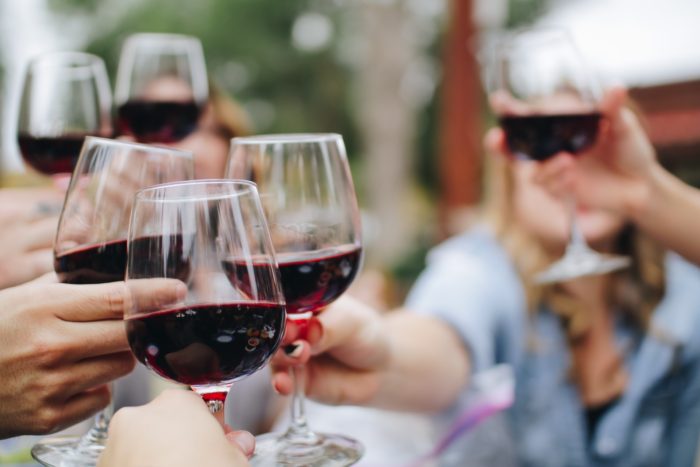
The roots of winemaking in Catalonia can be traced back to the time of the ancient Greeks and Romans. These early civilizations recognized the favorable terroir of the region and planted vineyards, introducing vinicultural practices and grape varieties that would lay the foundation for future winemaking endeavours. The Romans, in particular, made significant contributions to the development of Catalan viniculture, bringing advanced winemaking techniques and introducing new grape varieties.
Over the centuries, Catalonia experienced waves of conquerors and rulers, each leaving their mark on the region’s winemaking traditions. The Moors, who occupied parts of the Iberian Peninsula, had a profound influence on the agricultural practices of the region, bringing with them a knowledge of irrigation systems.
The Middle Ages witnessed the rise of monastic orders in Catalonia, with monasteries becoming centres of vinicultural knowledge and wine production. Monks played a pivotal role in preserving and advancing winemaking techniques, cultivating vineyards, and producing wines of exceptional quality. Their influence can still be seen today in the many historic monastic vineyards that dot the landscape.
Catalan society has long recognized the cultural significance of wine, cherishing it as an integral part of celebrations and traditions. Wine is deeply woven into the fabric of Catalan identity, with festive occasions and religious rituals often accompanied by the clinking of glasses and the joyful toast of “Salut!”
The Catalan people’s appreciation for wine extends beyond mere consumption; it also encompasses a reverence for the land and an unwavering commitment to quality. Traditional winemaking techniques, passed down through generations, are still honoured, while innovative approaches and sustainable practices are embraced by a new wave of winemakers. This harmonious blend of tradition and innovation is a testament to Catalonia’s dedication to producing wines of distinction.
A tour through the Costa Brava’s wineries: experiencing the essence of Catalan wines
Embarking on a tour through the wineries of Costa Brava is an opportunity to immerse oneself in the rich tapestry of Catalan winemaking. More than 40 wineries produce DO Empordà wines, a handful of which also produce cava.
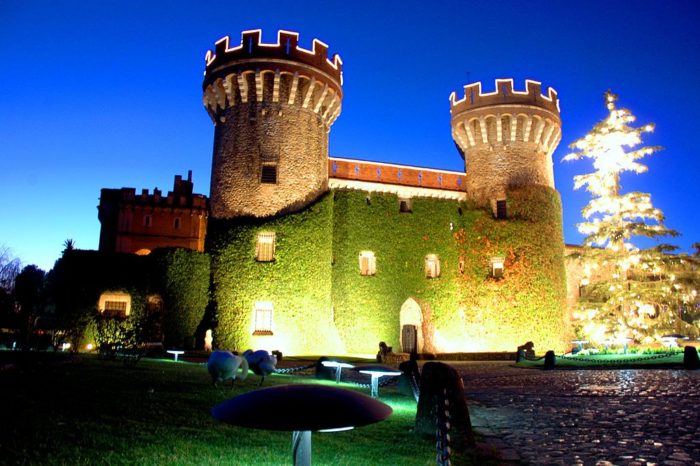
Peralada Castle at night. Photo by Josep Renalias (CC BY-SA 3.0)
Probably the best known of these is Castillo Perelada, which has a heritage dating back to the 14th century. Situated in a medieval castle, the estate boasts extensive vineyards and cellars, preserving the traditions and craftsmanship of generations past.
The winery embraces both traditional and modern winemaking techniques, producing a diverse range of wines that showcase the Empordà’s terroir. Castillo Perelada’s wines have gained international acclaim, solidifying its position as a cornerstone of the Costa Brava wine scene. The company also owns produces Gran Claustro Cava is Perelada, as well as owning estates south of Barcelona where it produces other cavas.
Another notable winery is Mas Oller. Nestled in the heart of the Empordà region between Palafrugell and Pals, Mas Oller is steeped in history and tradition. With vineyards dating back to the 14th century, the winery blends the wisdom of the past with a modern vision. Mas Oller follows sustainable vinicultural practices, utilizing organic and biodynamic methods to nurture the vines and protect the ecosystem.
And Celler Brugarol is an exemplary model of sustainability and innovation. The winery embraces a holistic approach, striving for regenerative agriculture and a minimal ecological footprint. From the use of renewable energy sources to the implementation of biodynamic farming practices, Celler Brugarol sets a new standard for environmental stewardship.
However, many of the local wineries offer tours of their cellars and wine tastings. And there are wineries that produce wines within the geographic area covered by that don’t meet the standards, such as using unauthorised grapes.
For availability of tours and tastings you should contact each winery directly. You might also want to check out this guided tour with wine tasting.
Wine tasting and pairing: savouring the flavours of the Costa Brava
Wine tasting is an art that engages the senses and allows us to fully appreciate the complexities and nuances of a wine. When exploring the wines of Costa Brava, it is essential to embrace the sensory experience and delve into the distinctive aromas, flavours, and textures that define Catalan wines.
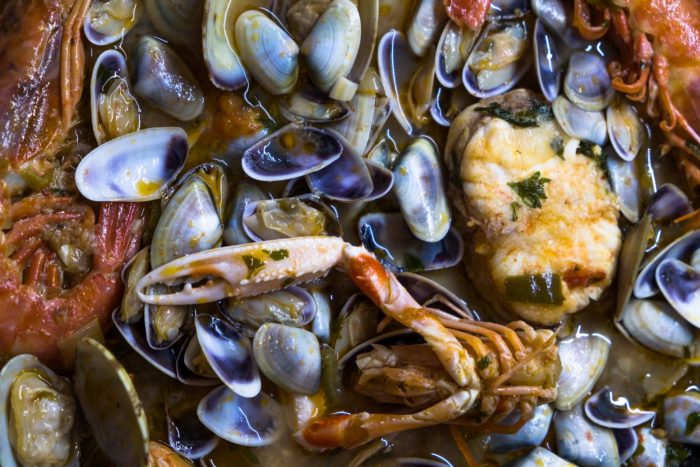
Wines from the Costa Brava region exhibit distinct characteristics that reflect the terroir and grape varieties of the area. Reds tend to be elegant with a medium to full body. Expect ripe fruit flavours, such as blackberries, cherries, and plums, along with hints of spices, herbs, and gentle tannins. The influence of oak aging may add layers of complexity and subtle vanilla or toasty notes.
White wines often showcase crisp acidity, refreshing citrus flavours, and vibrant fruit notes. Look for hints of green apple, pear, lemon zest, and floral undertones. Some whites may have a subtle minerality, influenced by the region’s diverse soils.
And don’t forget the region’s sparkling cavas, produced using the traditional method. These delightful bubblies exhibit lively effervescence, crisp acidity, and a range of flavours, from citrus and green apple to creamy nuances of brioche and almond.
The culinary scene offers a wide array of dishes that harmonise beautifully with the local wines.
Red wines go well with hearty Catalan dishes like carn d’olla, grilled lamb chops with romesco sauce, or botifarra sausages. For whites, try pairing them with fideuà, a noodle dish similar to paella, or escalivada, a roasted red peppers, aubergines and other vegetables, or with fresh seafood dishes like grilled prawns, paella, or anchovies.
Aged Empordà reds, or pair creamy white wines, go exceptionally well with the variety of artisanal cheeses produced in the area such as Garrotxa.
Guided tour of local wineries with tasting
By embracing the world of Catalan wines in the Costa Brava region, we gain more than just a taste of exceptional wines. Wine becomes a gateway to understanding the local culture, history, and traditions. It is an invitation to explore the diverse facets of a region that captivates the senses and leaves a lasting impression.
If you’d like to learn more about the Costa Brava’s wines then we recommend visiting a winery. While you can do this yourself, another option is to delve into the world of winemaking with a guided tour of two exclusive boutique wineries.
Led by an expert local wine guide, you’ll learn about the traditional and modern methods of wine production, exploring the rich vineyards that sprawl across the landscape and savour a Catalan breakfast featuring cheese and sausages, complemented by the region’s renowned wines.
With the owners present to offer insights, you’ll witness the seamless fusion of time-honoured practices with cutting-edge technologies during guided cellar tours. This five-hour tour promises an unforgettable tasting experience, accompanied by the breathtaking beauty of the Empordà region.
Learn more about the tour of local wineries with tasting included here.
So, whether you are a seasoned wine connoisseur or a curious traveller, we encourage you to embark on your own journey to Costa Brava. Immerse yourself in the enchantment of Catalan wines, wander through vineyards, taste the flavours of the land, and connect with the passionate winemakers who bring these wines to life. Costa Brava awaits, ready to share its wine heritage and the beauty that lies beyond the vineyards.

